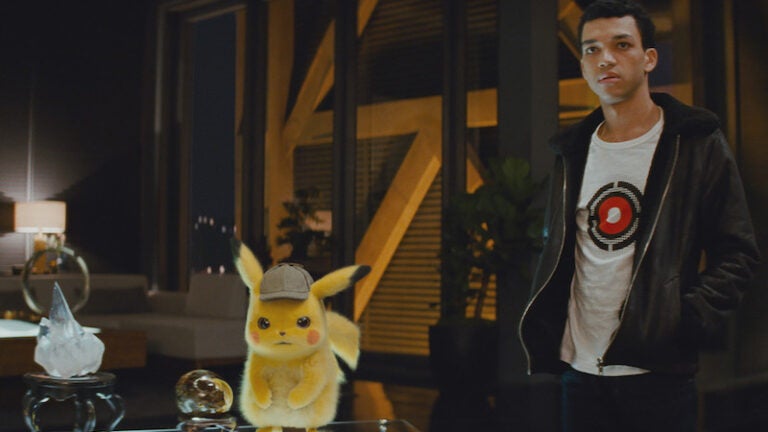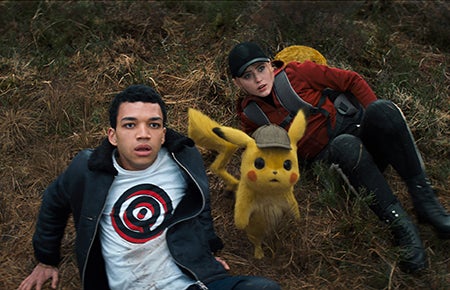
Pokémon can teach us about language
This month, Pokémon is hitting the big screen with Pokémon: Detective Pikachu. While eager fans of the animated franchise line up for tickets, researcher Stephanie Shih at USC Dornsife College of Letters, Arts and Sciences and her colleagues are taking a closer look at the linguistics of the Pokémon universe to help them understand ways that the brain processes language.
In human language, one of the underlying fundamentals is that there is no specific connection between the form of words and their meanings. In other words, the sound of a word doesn’t inherently carry meaning. This allows for free expression and flexibility in languages.
However, there are some instances where sounds do appear to signal meaning, a phenomenon called sound symbolism in which sounds are linked with specific shapes.
For example, the word “bouba” might conjure up something large and round while “kiki” might make you think of a smaller, sharper object. These two words were actually shown to have those particular associations across different and unrelated languages in a series of studies by different linguists dating back to the 1920s.
To dig deeper into the phenomenon, Shih and her colleagues are looking to Pokémon character names — or pokemonikers — as a dataset.
All in a name
So why pokemonikers?
“One of the challenges of studying patterns across languages is that not only are languages different from each other, how people perceive the world around them is different from culture to culture,” Shih explained.
With more than 800 Pokémon characters, pokemonikers are a constant referent across many different languages, with slight reinvention from one language to the next.
Also, Pokémon characters are categorized by their physical characteristics — weight, height, color, among a host of other traits — and they metamorphize over the course of the game into a similar but stronger species. As their physical attributes evolve, so do their names, which is what makes them such a compelling dataset, says Shih. For instance, the character Abra grows and evolves into the more robust Kadabra and finally the larger and stronger Alakazam.
The Pokéverse in English and Japanese

From left, Justice Smith as Tim Goodman, Detective Pikachu (Ryan Reynolds) and Kathryn Newton as Lucy Stevens in Legendary Pictures’ and Warner Bros. Pictures’ comedy adventure Pokémon Detective Pikachu, a Warner Bros. Pictures release.
In an initial study looking at sound symbolism in English and Japanese, Shih and her colleagues found a tendency in both languages to encode the same attributes with sound symbolism.
For instance, in both English and Japanese, the length of a Pokémon character name correlates to the size and power of what it represents. Abra, the character and name, is smallest and has the least power, while Alakazam is largest and has the most power.
In Japanese, a character’s name and their weight correlated with three elements: more moras, a unit of phonology similar to a syllable that cues stress and timing of a word’s pronunciation; voiced obstruents, a sound made by obstructing airflow from the mouth, like the “d” in “duck”; and back vowels, which are created when the tongue body reaches towards the back of the mouth, like the “o” in “go.” An example would be “Mimikkyu,” a Pokémon that weighs 1.5 pounds, versus “Banbadoro,” a Pokémon that weighs more than 2,000 pounds.
In English, weight correlated with more word segments (consonants and vowels), voiced obstruents, and low vowels, the sound created when the tongue is positioned as far as possible from the roof of the mouth. Think of the “a” in “hat.” An example would be “Chingling,” a Pokémon that weighs 1.3 pounds, versus “Garbodor,” a Pokémon that weighs about 240 pounds.
Notably, the character traits that are more closely associated with sound symbolic patterns appear to be attributes that are central to achieving goals within the Pokémon game. The study showed a character’s weight, height, power and evolutionary state all have significant phonological correlates in both English and Japanese.
Clues to how the mind processes language
These findings help us understand more about how the mind operates.
“It gives us a clue to the question: ‘Are sound symbolisms something that we’re born with in our cognitive system or is it something that gets learned from our exposure to our native languages?’
“It appears that we learn that these are sound symbolic patterns in our native languages and we’re able to apply that knowledge,” Shih explained. It also helps scientists understand why sound symbolism may occur in languages and what the most salient instances might be.
Shih and her colleagues are continuing their work using pokemonikers in a larger study, done with an international team of scientists, that will also include an examination of sound symbolism in Mandarin, Cantonese, Russian and Korean.
Listen to Shih talk more about the study on the linguistics podcast Talk the Talk.